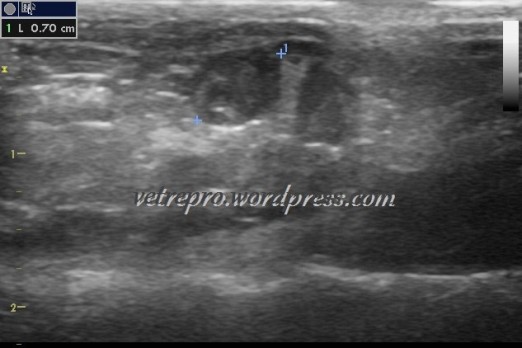Time has come for the 2nd part…
Chinchillas

Chinchillas become sexually mature at an average age of 8 months: females 8.5 months (2-14), and males at 8 (4-12) months.
They are polyestric animals. Females cycle seasonally (November to May in northern hemisphere). They come in estrus every 28-35 days. They also present postpartum estrus: 12 hours after parturition! Estrus lasts 3-4 days, perineum becomes reddened, the normally tightly closed vagina opens and expels a wax-like plug. Vulval swelling is not present.
Mating occurs biannually. Chinchillas form monogamous pairs or can be kept in harems. Gestation lasts 111-128 days. Pregnancy can be detected by palpation at 90 days. Litters size is 2 (1-6). Parturition occurs early in the morning. Newborns are fully furred and have their eyes open. They weigh 30-50 gr. Weaning occurs at 6-8 weeks, but they are able to eat solid food quite early (from the 1st week) as they are born with teeth!
Rats

Female rats are polyestric animals and they come in estrus every 4-5 days.
Social groups of rats are often formed of multiple males and multiple females. One male is dominant and a linear male hierarchy may form. The species is polygynous, and the dominant male is the most successful breeder. Territories and mates are defended through aggressive behavior.
Rats are able to breed throughout the year if conditions allow. The peak breeding seasons are summer and autumn. Females can produce up to 5 litters in one year. The gestation period ranges between 21 and 29 days, and young rats are able to reproduce within 3 to 5 months of their birth. Babies are born with closed eyes and hairless. Weaning occurs at 3 to 4 weeks of age.

Pregnancy diagnosis of the rat at the 8th day (Image by George Mantziaras)

Heart rate estimation of a rat fetus at the 12th day of pregnancy (Image by George Mantziaras)

Ultrasound of a rat fetus on the 18th day of pregnancy (Image by George Mantziaras)
Mice

Breeding onset is at about 50 days of age in both females and males. Mice are polyestrous and breed year round. They are spontaneous ovulators. The duration of the estrous cycle is 4–5 days and estrus lasts about 12 hours. Vaginal smears can be used to determine the stage of the estrous cycle. Mating is usually nocturnal and may be confirmed by the presence of a copulatory plug in the vagina up to 24 hours post-copulation. The presence of sperm on a vaginal smear is also a reliable indicator of mating.
Female mice housed together tend to go into anestrus and do not cycle. If exposed to a male mouse or the pheromones of a male mouse, most of the females will go into estrus in about 72 hours.
The average gestation period is 20 days. A fertile postpartum estrus occurs 14–24 hours following parturition, and simultaneous lactation and gestation prolongs gestation 3–10 days owing to delayed implantation. The average litter size is 10–12. Inbred mice tend to have longer gestation periods and smaller litters than outbred and hybrid mice. The young are called pups and weigh 0.5–1.5 g , are hairless, and have closed eyelids and ears.They are weaned at 3 weeks of age.
Gerbils

Gerbils reach sexual maturity at 10 to 16 weeks. They are polyestrous and they cycle every 4-7 days. They form monogamous pairs.
Gerbils will mate for several hours, in frequent short bursts followed by short chases, when the female allows the male to catch her. Once he catches her, the female will squeak and make flick motions to get the male off her. Males will not attack females except in rare circumstances, which may also include them having been separated from their original mates, or widowed. A female may attack a male, but usually he is more than a match for her. Copulatory plugs form in the reproductive tracts of females that hinder subsequent matings. The presence of these copulatory plugs suggests a polygynandrous mating syste
Gerbils may also experience postpartum estrus and delayed implantation, such that a new litter begins developing as soon as the first is weaned. Gestation periods, if females are not lactating, last 3 to 4 weeks, longer if lactating. Overall, litter sizes range from 1 to 13, although litters of 4 to 7 are much more common. Young gerbils are born completely naked and blind. Eyes open about two or three weeks after birth. The young can walk quickly and hop about on all fours at about three weeks. At around one month of age, the young are weaned and independent.
Hamsters

Hamsters reach puberty at the age of 6-8 weeks. They present estrus every 4 days.
Hamsters, as cricetines, are promiscuous, with males and females both having multiple mates. During mating, a copulatory plug forms and seals the female’s reproductive tract, preventing subsequent males from successfully fertilizing the female’s eggs. A female hamster often drives a male out of her territory soon after mating.
Cricetines are seasonal breeders that mate and raise their litters from February to November. Females bear 2 – 4 litters per year. Gestation is short, lasting 15 to 22 days, and litter sizes average 5 to 7 (1-13). Young hamsters nurse for about three weeks, and are sexually mature at six to eight weeks.
That’s all for rodents’ repro for the moment. I’m not sure if there will be a 3rd part. Maybe yes, if you ask for that!
Thanks for reading,
Bye bye till the next time!
George

January 13, 2016 at 04:32
This is a very nice summary. I have a chinchilla myself, and while she’s old to start breeding now (8 years), I’m considering breeding future chinchillas.
LikeLiked by 1 person
January 15, 2016 at 00:04
Thank you for your comment Kristina!
LikeLike